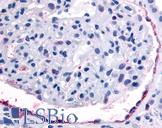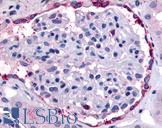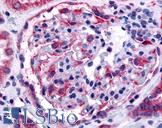Login
Registration enables users to use special features of this website, such as past
order histories, retained contact details for faster checkout, review submissions, and special promotions.
order histories, retained contact details for faster checkout, review submissions, and special promotions.
Forgot password?
Registration enables users to use special features of this website, such as past
order histories, retained contact details for faster checkout, review submissions, and special promotions.
order histories, retained contact details for faster checkout, review submissions, and special promotions.
Quick Order
Products
Antibodies
ELISA and Assay Kits
Research Areas
Infectious Disease
Resources
Purchasing
Reference Material
Contact Us
Location
Corporate Headquarters
Vector Laboratories, Inc.
6737 Mowry Ave
Newark, CA 94560
United States
Telephone Numbers
Customer Service: (800) 227-6666 / (650) 697-3600
Contact Us
Additional Contact Details
Login
Registration enables users to use special features of this website, such as past
order histories, retained contact details for faster checkout, review submissions, and special promotions.
order histories, retained contact details for faster checkout, review submissions, and special promotions.
Forgot password?
Registration enables users to use special features of this website, such as past
order histories, retained contact details for faster checkout, review submissions, and special promotions.
order histories, retained contact details for faster checkout, review submissions, and special promotions.
Quick Order
| Catalog Number | Size | Price |
|---|---|---|
| LS-C498789-50 | 50 µg (4 mg/ml) | $294 |
| LS-C498789-100 | 100 µg (4 mg/ml) | $360 |
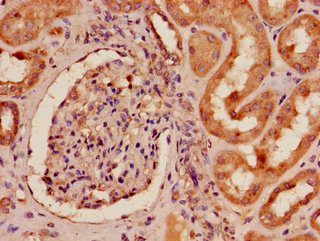
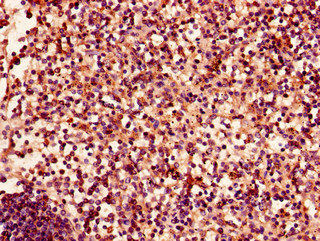
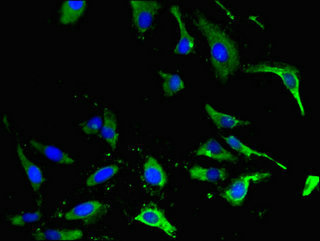
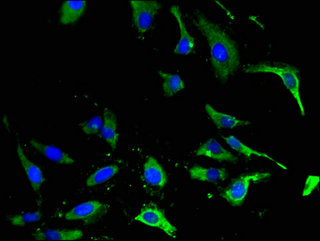




1 of 4
2 of 4
3 of 4
4 of 4
Polyclonal Rabbit anti‑Human EPHA4 / EPH Receptor A4 Antibody (IHC, IF) LS‑C498789
Polyclonal Rabbit anti‑Human EPHA4 / EPH Receptor A4 Antibody (IHC, IF) LS‑C498789
Toll Free North America
 (800) 227-6666
(800) 227-6666
For Research Use Only
Overview
Specifications
Description
EPH Receptor A4 antibody LS-C498789 is an unconjugated rabbit polyclonal antibody to human EPH Receptor A4 (EPHA4). Validated for ELISA, IF and IHC.
Target
Human EPHA4 / EPH Receptor A4
Synonyms
EPHA4 | CEK8 | EK8 | Ephrin type-A receptor 4 | HEK8 | SEK | TYRO1 | TYRO1 protein tyrosine kinase | Tyrosine-protein kinase TYRO1 | EPH receptor A4 | EPH-like kinase 8
Host
Rabbit
Reactivity
Human
(tested or 100% immunogen sequence identity)
Clonality
IgG
Polyclonal
Purification
Protein G purified
Modifications
Unmodified
Immunogen
Recombinant Human Ephrin type-A receptor 4 protein (345-545AA)
Specificity
Receptor tyrosine kinase which binds membrane-bound ephrin family ligands residing on adjacent cells, leading to contact-dependent bidirectional signaling into neighboring cells. The signaling pathway downstream of the receptor is referred to as forward signaling while the signaling pathway downstream of the ephrin ligand is referred to as reverse signaling. Highly promiscuous, it has the unique property among Eph receptors to bind and to be physiologically activated by both GPI-anchored ephrin-A and transmembrane ephrin-B ligands including EFNA1 and EFNB3. Upon activation by ephrin ligands, modulates cell morphology and integrin-dependent cell adhesion through regulation of the Rac, Rap and Rho GTPases activity. Plays an important role in the development of the nervous system controlling different steps of axonal guidance including the establishment of the corticospinal projections. May also control the segregation of motor and sensory axons during neuromuscular circuit development. In addition to its role in axonal guidance plays a role in synaptic plasticity. Activated by EFNA1 phosphorylates CDK5 at 'Tyr-15' which in turn phosphorylates NGEF regulating RHOA and dendritic spine morphogenesis. In the nervous system, plays also a role in repair after injury preventing axonal regeneration and in angiogenesis playing a role in central nervous system vascular formation. Additionally, its promiscuity makes it available to participate in a variety of cell-cell signaling regulating for instance the development of the thymic epithelium.
Applications
- IHC
- Immunofluorescence
- ELISA

|
Performing IHC? See our complete line of Immunohistochemistry Reagents including antigen retrieval solutions, blocking agents
ABC Detection Kits and polymers, biotinylated secondary antibodies, substrates and more.
|
Presentation
PBS, pH 7.4, 0.03% Proclin 300, 50% glycerol.
Storage
Short term: -20°C; Long term: -80°C; Avoid freeze-thaw cycles.
Restrictions
For research use only. Intended for use by laboratory professionals.
About EPHA4 / EPH Receptor A4
Publications (0)
Customer Reviews (0)
Featured Products
Species:
Human, Monkey, Mouse, Rat, Bat, Bovine, Dog, Hamster, Horse, Pig, Rabbit
Applications:
IHC, IHC - Paraffin
Species:
Human, Mouse
Applications:
IHC, IHC - Frozen, Western blot, Immunoprecipitation, ELISA
Species:
Human, Monkey, Bat, Bovine, Dog, Horse, Pig
Applications:
IHC, IHC - Paraffin
Species:
Human, Monkey, Mouse, Rat, Bat, Bovine, Dog, Hamster, Horse, Pig, Rabbit
Applications:
IHC, IHC - Paraffin, ELISA
Species:
Human, Monkey
Applications:
IHC, IHC - Paraffin
Species:
Human
Applications:
IHC, ICC, Immunofluorescence, Western blot, Flow Cytometry, ELISA
Request SDS/MSDS
To request an SDS/MSDS form for this product, please contact our Technical Support department at:
Technical.Support@LSBio.com
Requested From: United States
Date Requested: 11/24/2024
Date Requested: 11/24/2024

